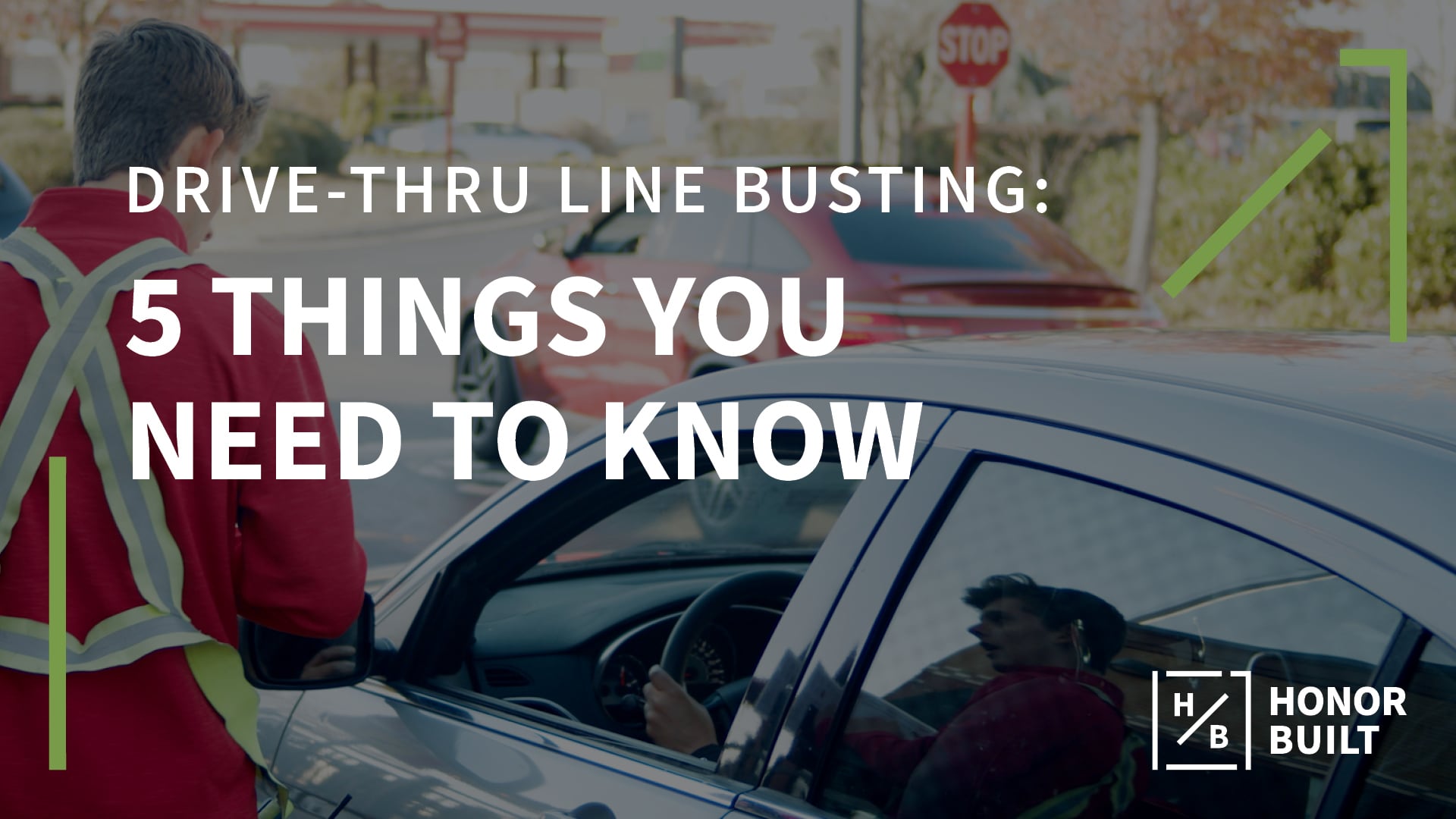The quick service restaurant dining experience is all about speed and convenience for the customer, and there’s nowhere that’s more evident than the drive-thru. As consumers grow more selective and technology-dependent, the pressure to deliver an easy seamless experience has increased. Providing a high-quality, consistent experience across your locations can be a heavy lift. Here’s what you need to know to improve your drive-thru line-busting efforts.
1. Customers want flexible drive-thru options
Customers want convenient, easy drive-thru experiences that allow them to get in and out as quickly as possible. According to QSR Magazine’s What Customers Really Think About Drive Thru report:
- 49% would prefer to order online and use a pickup-only drive-through lane.
- 42% would like more mobile options for ordering.
- 57% say they’d order from QSRs more often if they had drive-thrus.
It’s no surprise that germ-weary customers feel safer in their cars, and drive-thrus are thriving in the crisis.
The data also shows that a significant portion of consumers want an experience that blends digital and in-person interaction. They want a frictionless, flexible process that prioritizes convenience and speed.
2. Mobile devices are central to streamlining the experience
The newest trends and efficiencies in drive-thru line-busting all center around mobile devices. Consumers want to place pickup and delivery orders from their phone – 60% of digital orders are placed through a mobile app. And tablets and mobile payment readers are the key to taking drive-thru orders further up the line before a customer gets to a menu board.
That means every customer-facing element of the line busting process, from placing their order to making a payment, must be optimized for mobile.
3. Line-busting technology requirements can be complex
While online and mobile ordering have to be seamless for customers, things are a bit more complicated on the backend. It takes a complex web of hardware and software to provide the convenient, digitally integrated experience consumers want:
- Mobile credit card processing solutions and tablets to process orders
- Extra batteries and charging stations to keep devices running
- A strong, secure outdoor Wi-Fi network to keep data flowing
One common challenge in pulling together the right technology is compatibility. You need each system to keep data flowing from the time an order is placed, then sent to the kitchen, and finally delivered to the customer. Any new tool or system you adopt needs to be compatible with your existing point of sale solution. And your menu needs to be tablet- and phone-friendly. Ideally, you’ll work with the same systems and tools across your portfolio to ensure consistency at every location.
On top of all that, you need to consider network security and uptime. The reliability and security of your network and devices can be the determining factors between a slow or speedy experience.
A technology partner with experience working with QSRs can help you navigate these decisions.
4. Assess your physical limitations
If your line-busting strategies are effective, expect an influx of cars that your property may not have been built to withstand. The last thing you want is to become a nuisance to surrounding businesses or residents. Fearing that concern, some municipalities have even barred new drive-thru lanes, citing traffic, environmental, and safety concerns.
At each of your locations, assess whether your drive-thru lanes can handle the excess traffic. Will entrances, particularly those that accommodate accessible needs, be obscured by cars crowding onto your lot? What steps can you take to better control traffic and protect pedestrians? Will cars spill out into the street and block traffic? It’s a good idea to prepare for these issues before you start implementing new line-busting tactics.
5. Drive-thrus are highly competitive
As the QSR Magazine study shows, drive-thrus are popular with a majority of consumers. Brands that traditionally avoided drive-thrus were adopting the practice before the pandemic, and now the environment is even more competitive.
It’s vital to differentiate your customer experience to attract new customers and build brand loyalty. When you can assure a high-quality, speedy experience across your locations, customers trust that they’ll get the flexibility and convenience they’re looking for.
Upgrading the drive-thru experience pays off
Investing in line-busting strategies is worth the effort. After all, the faster you can move a customer through the experience, the more people you can serve. Technology is the underlying element driving change in line-busting. It’s important to have the right blend of hardware and software, as well as installation and maintenance support to set up your operation and keep orders moving.
HonorBuilt has more than 20 years of experience installing and supporting technology in quick service restaurants. We ensure a seamless, consistent experience across your locations by deploying our own employees nationwide. Let us help you evaluate your drive-thru line-busting options and get set up to serve your customers more efficiently.

